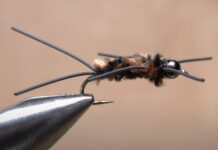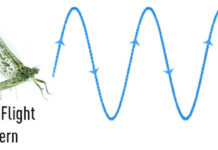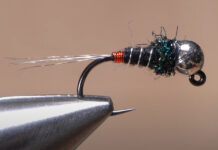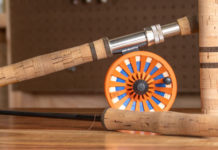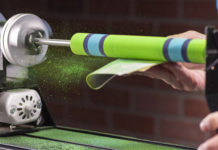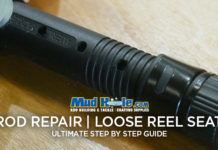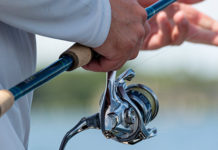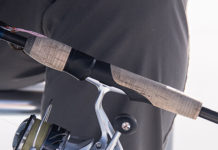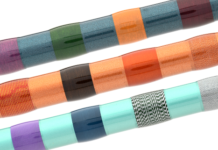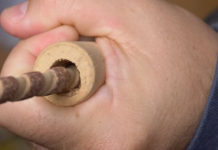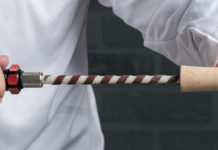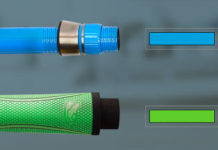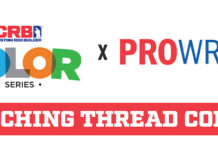Over the last decade light-line surf fishing has become immensely popular. There are many reasons why this type of fishing has caught fire. Heavier surf setups have been replaced with light weight trout or steelhead gear. Matching the size of the equipment to size of fish has made surf fishing more productive and a lot more fun. The small investment needed in both equipment and time has also added to its popularity.
Both light-line and heavy equipment rods and reels both have their places in surf fishing; each giving you an option to target the fish which are best suited for each setup.
What is light-line surf fishing?
Light-line surf fishing first hit the beach back in the early seventies when surfers turned fishermen tried lighter gear to catch surf fish. Over the years, surf fishing has become much more refined as equipment manufacturers have put some great rods and reels on the market. New lighter equipment along with a wide variety of baits has helped make light-line surf fishing popular.
What equipment do you use?
When talking about light-line surf fishing there are two types of rods. One rod is for the open beach which utilizes a spinning reel loaded with six-pound monofilament. The other surf rod is used exclusively for throwing heavier lures like kastmasters, korcodiles and hard baits. This is a casting rod matched with a conventional reel loaded with ten to twenty-pound monofilament.
For my beach spinning rod I prefer a seven to nine foot rod with parabolic to medium action. Rods rated for four through sixteen-pound test line and a lure weight of one-half to one ounce all work well. Many rods in the “steelhead” category fit these specs. You may even have a trout rod in your garage that meets your needs so look there first. I match that rod with a 2000 to 3000 size spinning reel loaded with 6lb monofilament.

When it comes to a casting rod, I prefer a seven to eight foot rod rated for ten to twenty-pound test monofilament. Medium to heavy power is required of this rod for casting and retrieving lures. The casting rod uses a small conventional reel and handles lure weights up to one and one-half ounce.
What is the best rig for the surf?
Most times I just use one rig in the surf—the Carolina rig. It’s a very simple and effective way to present your bait. The Carolina is made up of a sliding egg sinker, a bead, a swivel, eighteen-inches of leader and a hook. You may vary the leader length and sinker size depending on the size of surf and the strength of the current. For days with big surf and strong currents use a shorter leader and a heavier sinker, then you would on a calm day. Keep in mind how important it is for your bait to always be in contact with the bottom—as this is where fish feed!

A second common rig for the surf is designed especially for fishing corbina. This rig is a simple uni to uni knot that attaches thirty-inches of four or six-pound fluorocarbon leader to your main line. With this rig just pin on a sand crab and fly-line the bait into the surf. If you need a bit of weight use a small weight such as a pinch-on gremlin sinker or split shot. Allow your bait to wash in and out with the surge of the waves and hold on—there’s a corbina on its way!

What baits work best in the surf?
Surf baits break down into two general categories: Live bait and lures. With lures you have many choices. For halibut hardbaits such as Lucky Craft Flash Minnows, Rapalla, Sebile, Yo-zuri and several other “hard baits” work exceptionally well. For other surf fish (like corbina, spotfin croaker and halibut) try three-fourths ounce Krocodiles and Kastmasters. Both of these lures work well in the surf and attract a wide variety of surf fish. When fishing for perch and the occasional corbina a Carolina rigged Gulp! sandworm or a one and one-half inch plastic grub will work too.

For live bait the list is almost endless but the most common choices might be: Sand crabs, lug and blood worms, ghost shrimp, sidewinder crabs, mussels and clams. Some of these baits can be purchased at your local tackle shop. Others must be collected at the beach or in nearby marine areas near harbors, jetties and estuaries. My suggestion is to call one of the many great tackle shops near the beach and ask them what bait they carry and where to use it. You may also pick up a copy of my book, which gives details about how to find, catch and keep bait alive.
How do I find fish at the beach?
There are a great many places to find fish at the beach but here are a few of my favorites: When you first get to the beach find a high spot on the sand where you can see waves crashing on the beach. Look up and down the beach for off-colored, foaming and swirling water. This is where a rip current has formed. If you find this you will find fish. Approach the rip current from the side and fish it’s edges where clear water meets turbid water.

Here you can see the rip where the murky water is being sucked out to sea.
Another place for fish to hide at the beach is in the long shore trough. When waves break, both inside and outside troughs are formed. The inside trough is just a few feet from shore. You have seen it before (or even experienced it) when you see a surfer walk out and then drop into neck deep water. Fishing is good here at high tide because forage is churned up in the trough and it is also a safe place for fish to hide.

Similar to the trough that forms near the beach, the outside trough forms beneath waves that break the farthest from shore and is a productive spot to fish at low tide.
My favorite place at the beach to fish during winter is around any rock structure. Looks for jetties, harbor entrances and rock outcroppings. This is where fish feed and hide during the winter months. When first approaching a jetty or rock structure pay special attention to the direction of the swell. Normally you will find that fishing on the opposite side of where the swell meets the rocks is most productive. Fish use the eddy current, which is produced on the opposite side by the swell, to help them find food, air and a safe place to live.
Where can I learn more about surf fishing ?

There are countless places on the internet to find surf fishing information. Start by looking at the surf fishing section on this site HERE, and Bill Varney’s site www.fishthesurf.com . Without question, the best place to find information about surf fishing is from your coastal tackle shop. These shops speak with surf fishermen every day and know what bait, tackle and area have the best fishing.
Credit: Source link


